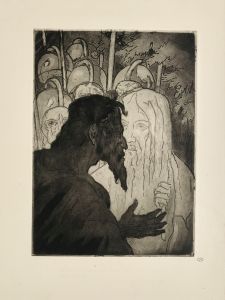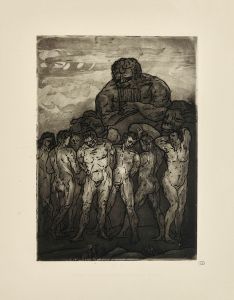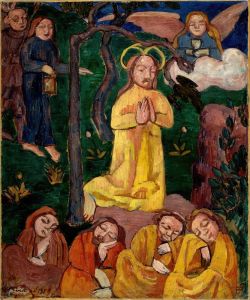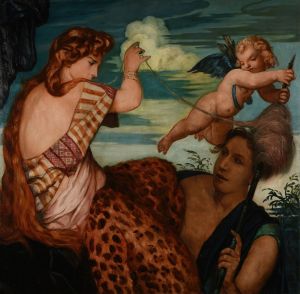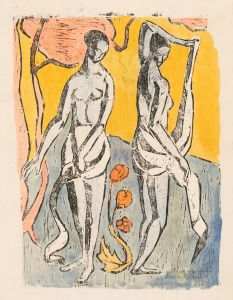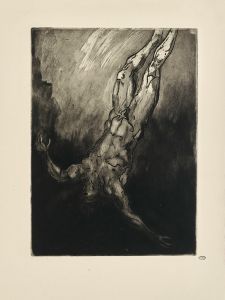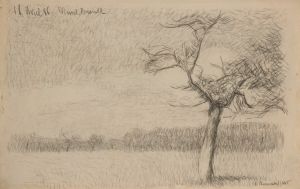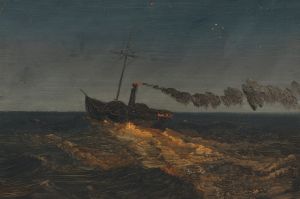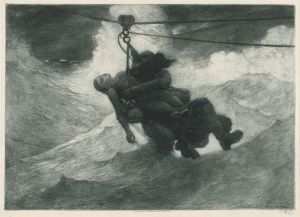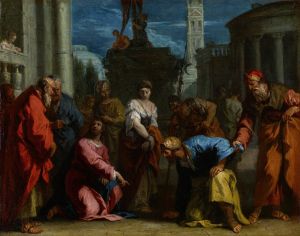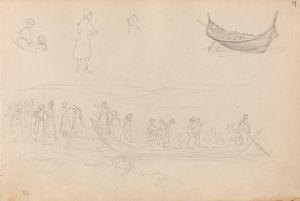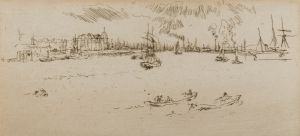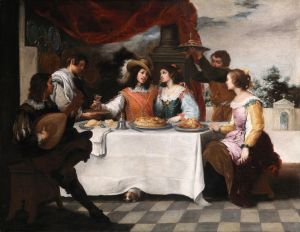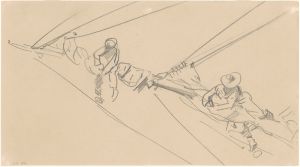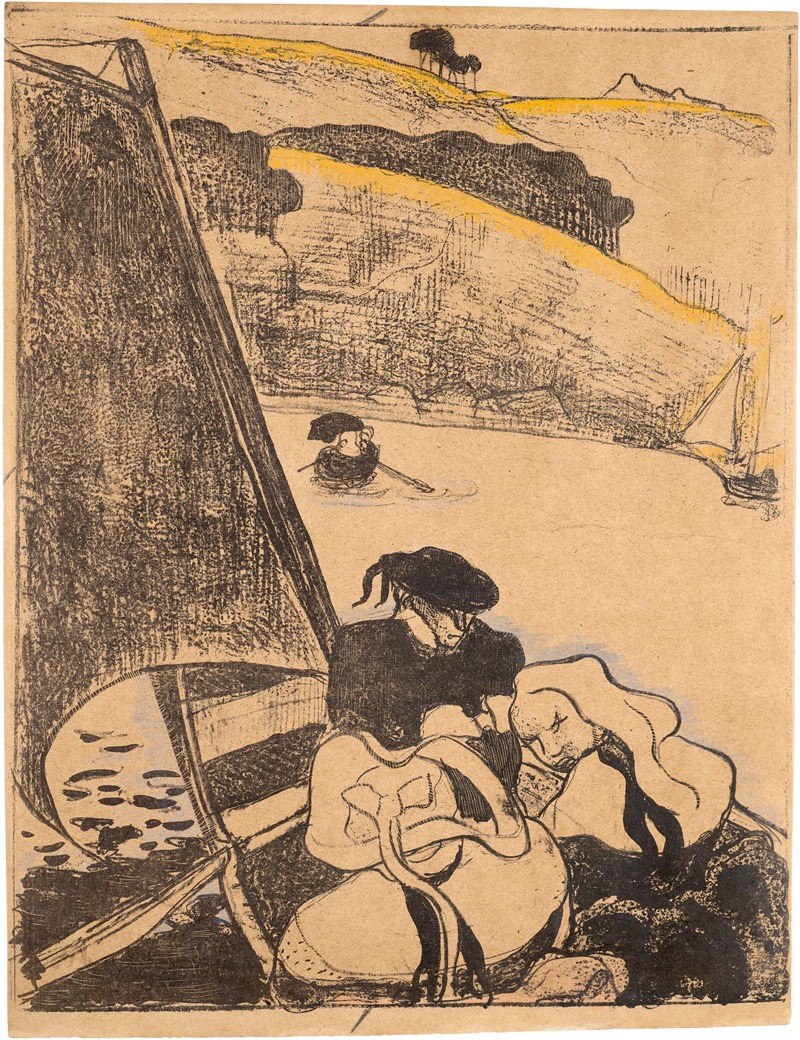
Bretons dans une barque ou Le retour du pardon
A hand-painted replica of Emile Bernard’s masterpiece Bretons dans une barque ou Le retour du pardon, meticulously crafted by professional artists to capture the true essence of the original. Each piece is created with museum-quality canvas and rare mineral pigments, carefully painted by experienced artists with delicate brushstrokes and rich, layered colors to perfectly recreate the texture of the original artwork. Unlike machine-printed reproductions, this hand-painted version brings the painting to life, infused with the artist’s emotions and skill in every stroke. Whether for personal collection or home decoration, it instantly elevates the artistic atmosphere of any space.
"Bretons dans une barque ou Le retour du pardon" is a painting by the French artist Émile Bernard, created in 1889. Émile Bernard was a significant figure in the Post-Impressionist movement and played a crucial role in the development of Symbolism and Synthetism in art. He was closely associated with other prominent artists of his time, including Paul Gauguin and Vincent van Gogh.
The painting's title, "Bretons dans une barque ou Le retour du pardon," translates to "Bretons in a Boat or The Return from the Pardon." The work reflects Bernard's interest in Breton culture and religious traditions. The "pardon" refers to a traditional Breton pilgrimage and religious festival, which was a common theme in the works of artists who were fascinated by the region's unique customs and landscapes.
In this painting, Bernard depicts a group of Breton people in a boat, likely returning from one of these religious festivals. The composition is characterized by its bold use of color and simplified forms, which are hallmarks of Bernard's Synthetist style. Synthetism, a term coined by Bernard and Gauguin, emphasizes the synthesis of form and color to express emotions and ideas, rather than focusing on naturalistic representation.
Bernard's work during this period was heavily influenced by his time in Pont-Aven, Brittany, where he was part of an artist colony that included Gauguin and other avant-garde painters. The Pont-Aven School, as it came to be known, was instrumental in the development of new artistic techniques and ideas that would later influence movements such as Fauvism and Cubism.
"Bretons dans une barque ou Le retour du pardon" exemplifies Bernard's departure from the Impressionist style that dominated the late 19th century. Instead of capturing the fleeting effects of light and atmosphere, Bernard and his contemporaries sought to convey deeper symbolic meanings through their work. This painting, with its focus on Breton life and spirituality, reflects Bernard's desire to explore themes of tradition, community, and faith.
The use of flat, unmodulated colors and strong outlines in the painting is indicative of Bernard's Synthetist approach. This technique was inspired by Japanese prints and medieval stained glass, both of which Bernard admired for their clarity and expressive potential. By employing these methods, Bernard was able to create a sense of timelessness and universality in his depiction of Breton culture.
Émile Bernard's contributions to the art world extend beyond his paintings. He was also a prolific writer and theorist, penning numerous essays and letters that articulated his artistic philosophy and critiqued contemporary art practices. His correspondence with Vincent van Gogh, in particular, provides valuable insights into the thoughts and motivations of these pioneering artists.
Today, "Bretons dans une barque ou Le retour du pardon" is recognized as an important work in Bernard's oeuvre and a significant example of Post-Impressionist art. It is held in various private and public collections, where it continues to be studied and appreciated for its innovative style and cultural significance. Through this painting, Émile Bernard not only captured a moment in Breton life but also contributed to the broader dialogue about the role of art in expressing human experience and spirituality.





